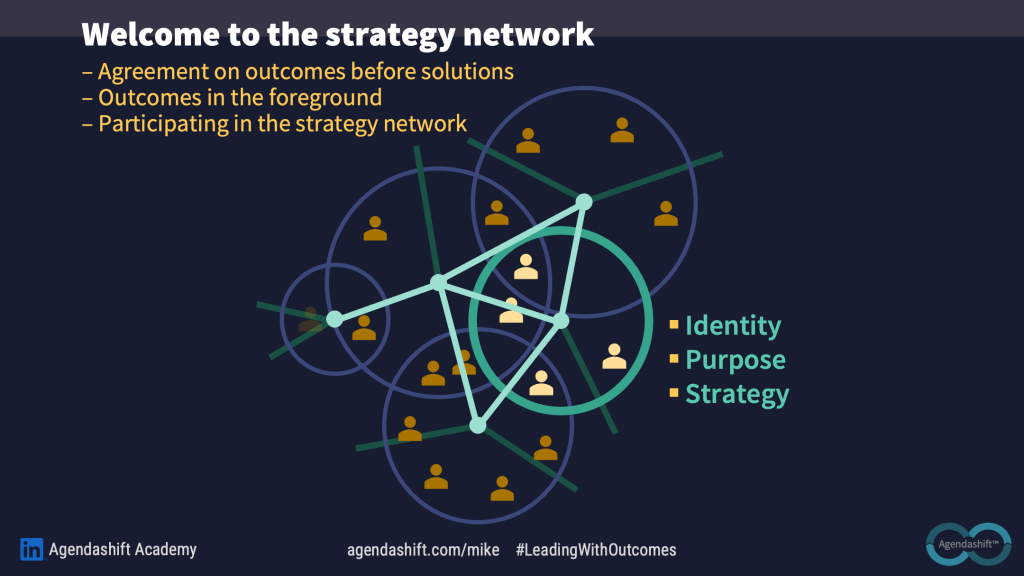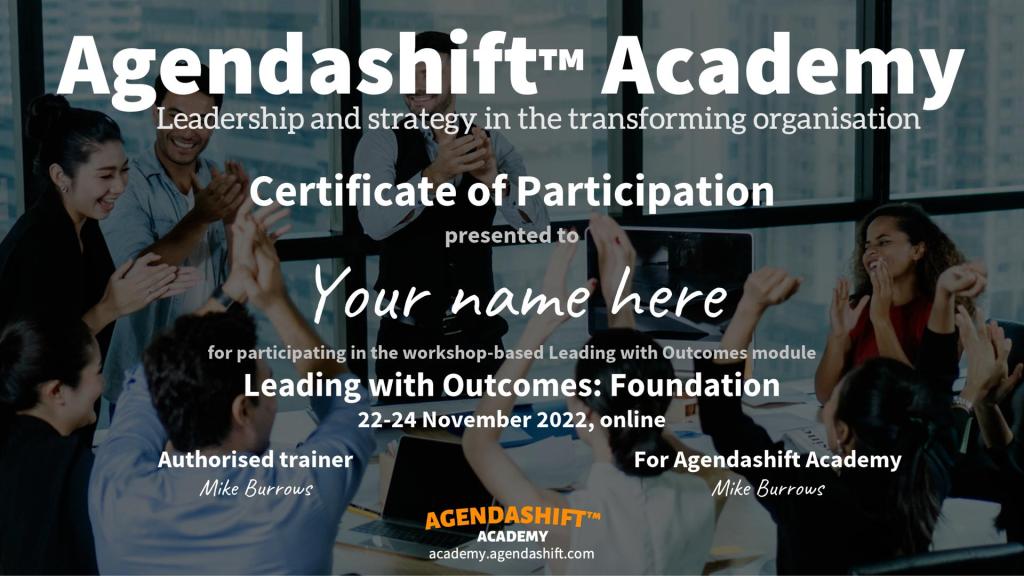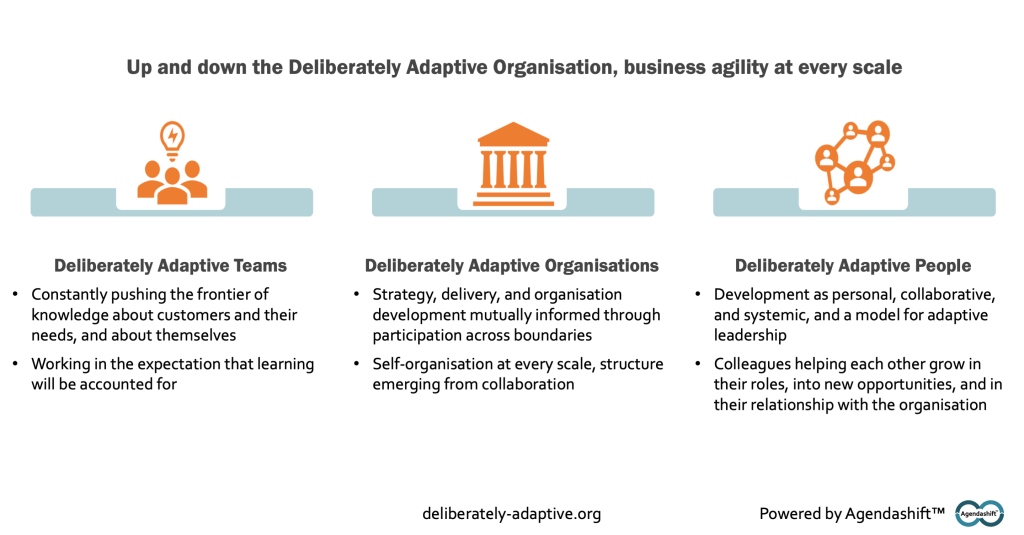Welcome to 2024! Happy New Year!
2024 has already started of course, and with the valued help of over 20 contributors I iterated several times over the holiday period on this article posted on the blog here yesterday:
- From Flow to Business Agility – your comments/reactions etc on LinkedIn greatly appreciated
Also new is a section on the Agendashift Academy site for facilitated Leading with Outcomes workshops:
- Leading with Outcomes Discovery Workshop
- Leading with Outcomes Assessment Debrief Workshop
- Outside-in Strategy Review Workshop
- Adaptive Organisation Workshop
In the calendar (see Upcoming events below):
- Free monthly webinars (series link) – these recommence Thursday 11th
- Free experience/practice sessions (series link) – recommencing Thursday 25th
- Leading with Outcomes: Train-the-Trainer / Facilitator (TTT/F) – beginning February 6th
Regarding that last one, see Upcoming events below re discounts.
In the pipeline:
- Leading in a Transforming Organisation – at least two of these events in the UK this year and I hope one or two abroad too
- Updates to Obstacles Fast and Slow – the exercise formerly known as Good Obstacle, Bad Obstacle) – also 15-minute FOTO, Featureban, and Changeban
- Two books (my fourth and fifth), working titles:
- Organizing Conversations: Patterns of Dialog for the Transforming Organization
- Wholehearted: Engaging with complexity in the Deliberately Adaptive Organisation
- A new keynote to add to the three recorded here
Most pressing is the re-recording of the Inside-out and Outside-in strategy modules. Like the Adaptive Organisation module, Inside-out will be split into two, likely titles:
- Inside-out Strategy (I): On the same page, with purpose
- Inside-out Strategy (II): Fit for maximum impact (keeping the title of the original one-part module)
Once Inside-out and Outside-in are on the new learning management system there will be significant opportunity for rationalisation. If you’re not already on board there, check these out:
- Leading with Outcomes: Foundation
- Adaptive Organisation, two parts:
Or get in touch about holding a Leading in a Transforming Organisation training workshop near you; this covers Foundation and Adaptive Organisation, with all the benefits of an in-person experience, and some unique features too. I’m not asking anyone to take responsibility for the event (though that can be arranged); just your interest would be good to know.
Upcoming events
Recent changes:
- Leading in a Transforming Organisation (London) is brought forward a week to 25-27 June
- Added Leading in Transforming Organisation (Southampton), October 8-10
- Webinars and experience/practise sessions taking a break now until the autumn
May
- 14 May to 22 February, online, Tuesday & Wednesday afternoons (UK time):
Leading with Outcomes: Train-the-Trainer / Facilitator (TTT/F)*
June
- 4-6 June, Berlin, Germany
Leading in a Transforming Organisation (Berlin)* - 25-27 June, London, UK:
Leading in a Transforming Organisation*
October
- 8-10 October, Southampton, UK:
Leading in a Transforming Organisation*
*For TTT/F and Leading in a Transforming Organisation, ping me for coupon codes if any of the following apply:
- Employees in public sector, education, and non-profit organisations get 40% off, as do authorised trainers and facilitators
- There are subscription-specific discounts for Agendashift Academy subscribers
- Members of the old partner programme get 30% off
- Past participants of Leading in a Transforming Organisation can re-attend with 60% off (75% if you work for a public sector, education, or non-profit organisation)
- Past TTT/F participants can re-attend online for free
Leading with Outcomes from the Agendashift Academy
“Leadership and strategy in the transforming organisation”
Leading with Outcomes is our modular curriculum in leadership and organisation development. Each module is available as self-paced online training or as private, instructor-led training (online or in-person). Certificates of completion or participation according to format. Its modules in the recommended order:
- Leading with Outcomes: Foundation
- Inside-out Strategy (I): On the same page, with purpose
- Inside-out Strategy (II): Fit for maximum impact
- Part I: Business agility at every scale
- Part II: Between spaces, scopes, and scales
- Outside-in Strategy: Positioned for success
Individual subscriptions from £24.50 £18.40 per month after a 7-day free trial, with discounts available for employees and employers in the government, healthcare, education, and non-profit sectors. For bulk subscriptions, ask for our Agendashift for Business brochure.
To deliver Leading with Outcomes training or workshops yourself, see our Authorised Trainer and Authorised Facilitator programmes. Our next TTT/F training takes place in May (online).
Agendashift™: Serving the transforming organisation
Links: Home | Subscribe | Events | Media | Contact | Mike
Agendashift Academy: Leading with Outcomes | Trainer and Facilitator Programmes | Store
At every scope and scale, developing strategy together, pursuing strategy together, outcomes before solutions, working backwards (“right to left”) from key moments of impact and learning.










